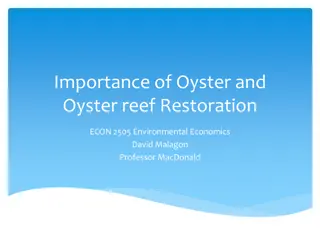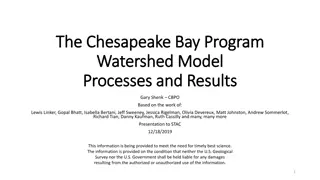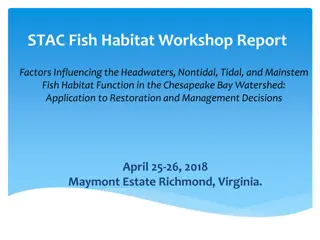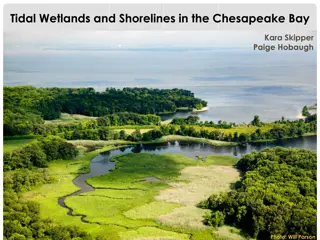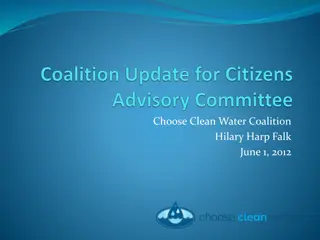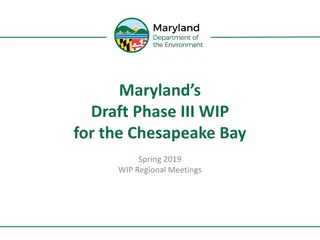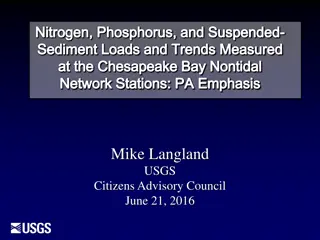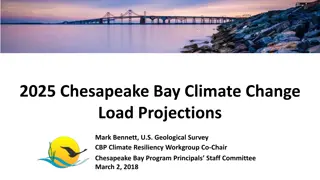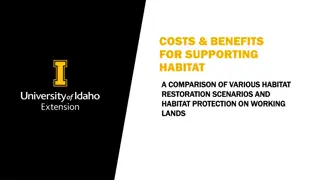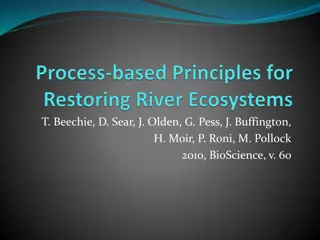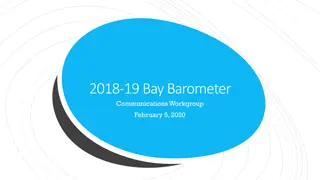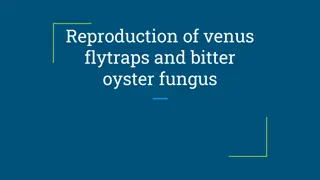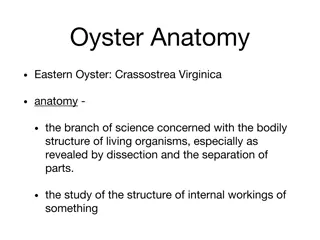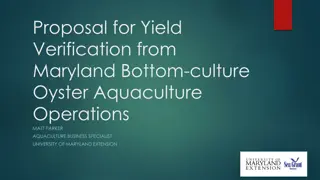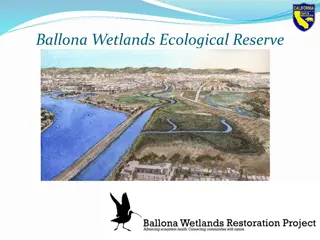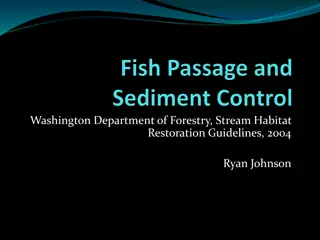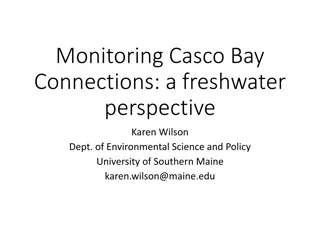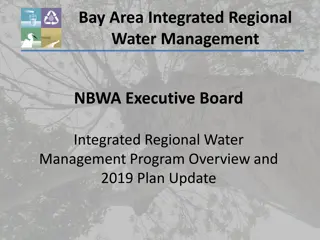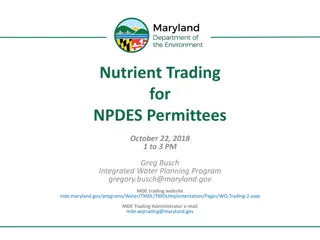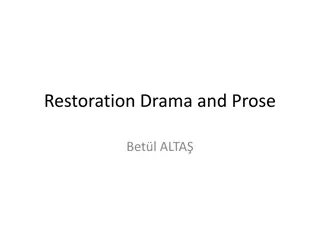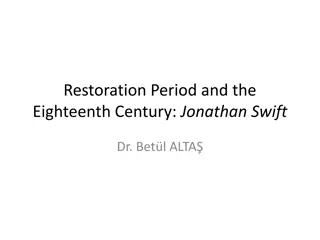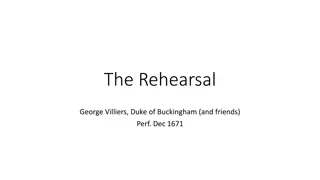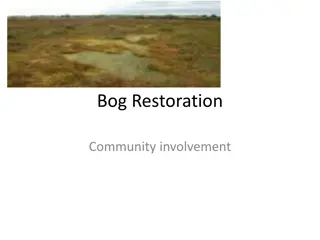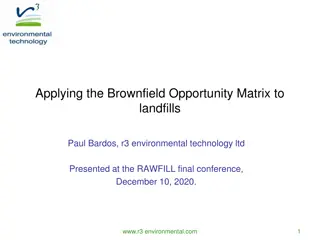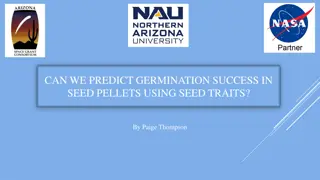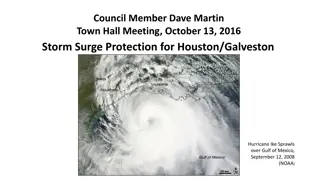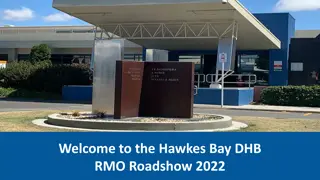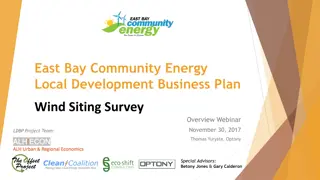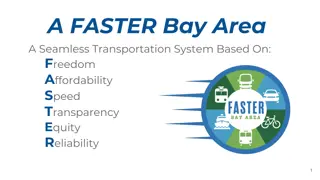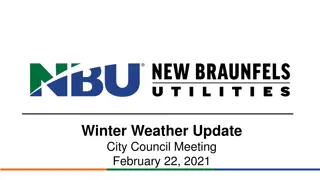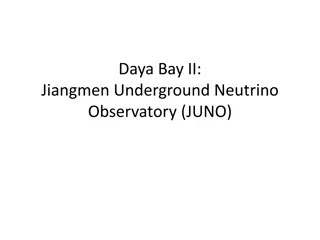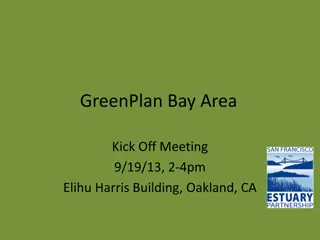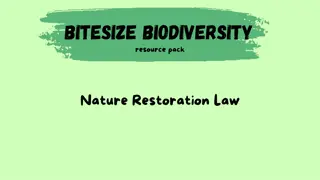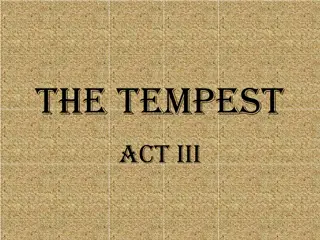Oyster Restoration Efforts in Chesapeake Bay
Efforts are underway to restore oyster populations in Chesapeake Bay tributaries by 2025. Various workgroups, stakeholders, and scientists are collaborating to define restoration goals, develop tributary plans, conduct population surveys, and manage the restoration process. The Harris Creek tributary plan, involving consultation with government agencies and scientists, outlines acreage, substrate, seeding, estimated costs, and permit issues for restoration activities.
- Oyster Restoration
- Chesapeake Bay
- Tributary Plans
- Environmental Conservation
- Stakeholder Collaboration
Download Presentation

Please find below an Image/Link to download the presentation.
The content on the website is provided AS IS for your information and personal use only. It may not be sold, licensed, or shared on other websites without obtaining consent from the author. Download presentation by click this link. If you encounter any issues during the download, it is possible that the publisher has removed the file from their server.
E N D
Presentation Transcript
Peyton Robertson, NOAA February 2013
Overview Goal: Restore oyster populations in 20 tributaries by 2025 Oyster Metrics: Developed Bay-wide, consensus definition of restored reef and restored tributary Tributary Selection: MD & VA Oyster Restoration Interagency Workgroups
Chesapeake Bay Program Sustainable Fisheries Goal Implementation Team MD Interagency Oyster Restoration Workgroup VA Interagency Oyster Restoration Workgroup (NOAA; Army Corps- Norfolk; VA Marine Resources Comm.) MD Oyster Restoration Partners VA Oyster Restoration Partners (NOAA; Army Corps - Baltimore; MD Dept. Natural Resources; ORP) Oyster Metrics Team (NOAA, Army Corps DNR,VMRC, ORP) 3
Maryland Harris Creek Workgroup: NOAA, Army Corps Baltimore, MD Dept Natural Resources, and Oyster Recovery Partnership 13 Consulting Scientists Little Choptank Tributary Selection: Harris Creek (#1) Little Choptank River (#2) Develop Tributary Plans: Harris Creek Little Choptank River
Harris Creek: Tributary Plan Process Define restoration goal: target acreage = 300-600 acres Conduct pre-restoration oyster population surveys Develop a draft map summarizing major datasets Conduct public open house Develop a draft tributary plan Send draft to the Coast Guard Send draft to consulting scientists for review Complete tributary plan (living document) Obtain permit clearance, as needed Implement/ continue seeding and substrate activities Monitor project performance and adaptively manage
Restorable Bottom Analysis Population Survey
Harris Creek Tributary Plan Acres: 377 Substrate: 350,000 cubic yards Seed: 2 billion Estimated cost: $31 million Permit issues: MD DNR: needs permit modification to construct reefs that will allow 5 ft clearance (current permit specifies 8 ft); modification under review Army Corps: needs NEPA modification to construct reefs that will allow 5 ft clearance (current NEPA is 8 ft clearance); under review.
Harris Creek: Restoration Progress 2012: 22 acres new reef constructed (Army Corps) 97 acres seeded (Oyster Recovery Partnership, in partnership with Univ. of MD, with funding from NOAA and DNR) 2013 (planned): 34 acres to be constructed (Army Corps) 97 acres to be planted (Oyster Recovery Partnership, with funding from NOAA and DNR) DNR: $7 m to spend on substrate and seed; in water in 2013 Sanctuary Boundary Meets restored goal (3) 2012: seeded (97) 2012: constructed (22) 377 acres targeted
Harris Creek: Restoration Progress, cont d Good News: Natural spat set on Harris Creek in 2012 DNR & NOAA are funding population assessments to see if some reefs need less seed than anticipated due to natural set Sanctuary Boundary Meets restored goal (3) 2012: seeded (97) 2012: constructed (22) 377 acres targeted Summary: Approx 1/3 of the way toward the 300 acre minimum goal End of 2013: likely to be 2/3 of the way there
Virginia Tributary Selection: Lynnhaven River Lafayette River Elizabeth: Western Branch Elizabeth: Eastern Branch Lafayette Elizabeth: Western Branch Lynnhaven Elizabeth: Eastern Branch
Lafayette River: NOAA funded CBF (reef balls and oyster seed) and Elizabeth River Project (reef construction) to do restoration work in 2012 and 2013 Plan to continue as funding allows NOAA conducted acoustic mapping and ground-truthing surveys of the benthic habitat of the lower 1/3 of the river to inform future restoration work.
Virginia Analysis of prior restoration (Army Corps) Great Wicomico Lynnhaven Great Wicomico Lynnhaven
Ecosystem Services Project Fisheries Production Denitrification
Challenges Funding Limited Shell Permitting
What can the Management Board do? Show the Bay Partnership can make a measurable difference in a place Endorse Harris Creek as a focus area for GIT collaboration Pursue funding strategies to accelerate oyster restoration efforts


